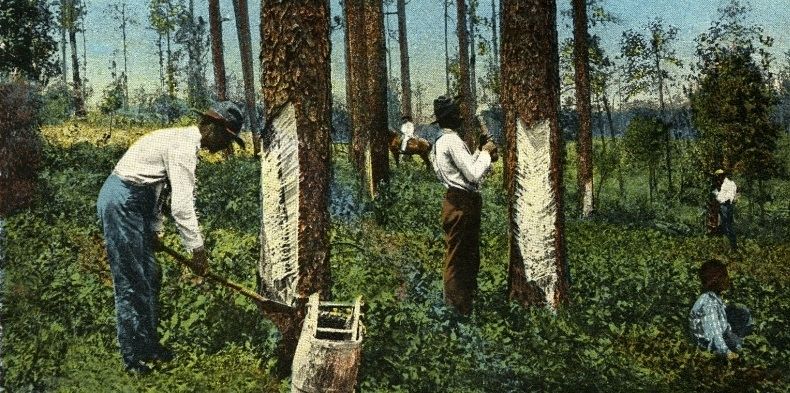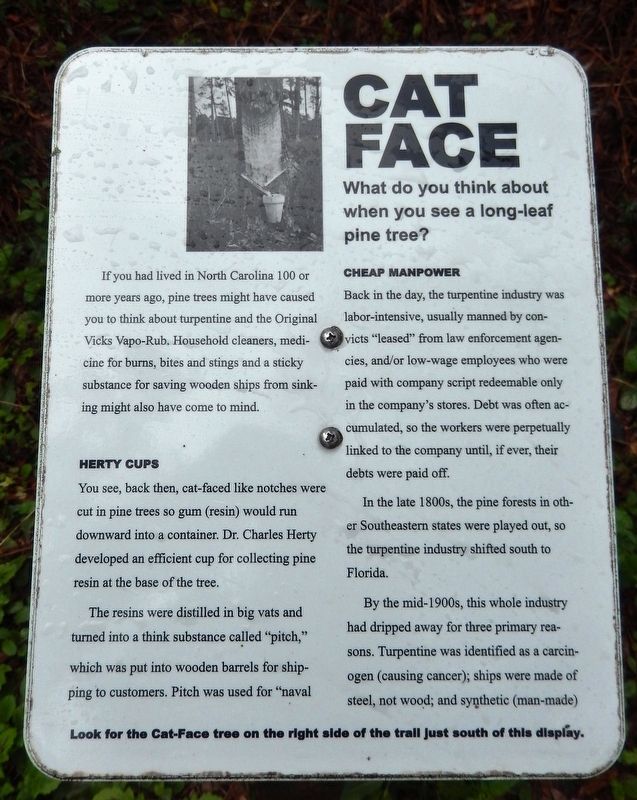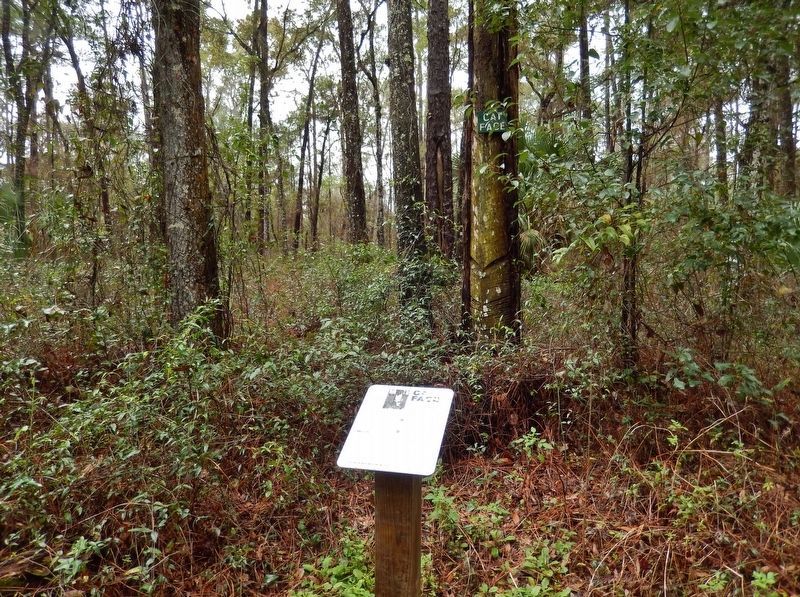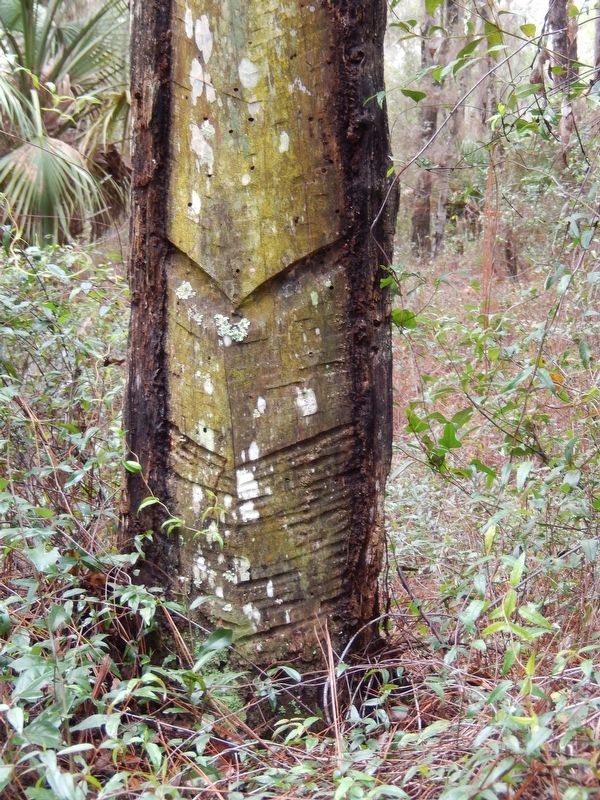Near Ocala in Marion County, Florida — The American South (South Atlantic)
Cat Face
Historic Florida Barge Canal Trail
What do you think about when you see a long-leaf pine tree?
If you had lived in North Carolina 100 or more years ago, pine trees might have caused you to think about turpentine and the Original Vicks Vapo-Rub. Household cleaners, medicine for burns, bites and stings and a sticky substance for saving wooden ships from sinking might also have come to mind.
Herty Cups
You see, back then, cat-faced like notches were cut in pine trees so gum (resin) would run downward into a container. Dr. Charles Herty developed an efficient cup for collecting pine resin at the base of the tree.
The resins were distilled in big vats and turned into a thick substance called "pitch," which was put into wooden barrels for shipping to customers. Pitch was used for "naval waterproofing.”
Cheap Manpower
Back in the day, the turpentine industry was labor-intensive, usually manned by convicts "leased" from law enforcement agencies, and/or low-wage employees who were paid with company script redeemable only in the company's stores. Debt was often accumulated, so the workers were perpetually linked to the company until, if ever, their debts were paid off.
In the late 1800s, the pine forests in other Southeastern states were played out, so the turpentine industry shifted south to Florida.
By the mid-1900s, this whole industry had dripped away for three primary reasons. Turpentine was identified as a carcinogen (causing cancer); ships were made of steel, not wood; and synthetic (man-made)… [end of sentence missing from marker]
Look for the Cat-Face tree on the right side of the trail just south of this display.
Erected by Florida State Parks.
Topics. This historical marker is listed in these topic lists: Horticulture & Forestry • Industry & Commerce.
Location. 29° 6.097′ N, 82° 5.339′ W. Marker is near Ocala, Florida, in Marion County. Marker can be reached from the intersection of Southeast 80th Street (County Road 328) and South Pine Avenue (U.S. 441), on the right when traveling east. Marker is located along the trail at "The Island" - Cross Florida Barge Canal Interpretive Park, just south of the Marion County Sheriff's Station. Touch for map. Marker is at or near this postal address: 3260 Southeast 80th Street, Ocala FL 34480, United States of America. Touch for directions.
Other nearby markers. At least 8 other markers are within walking distance of this marker. Greenway Greenlife (a few steps from this marker); History: Crops (a few steps from this marker); Green Monsters (within shouting distance of this marker); Florida Crackers (within shouting distance of this
marker); Florida Seminoles (within shouting distance of this marker); A Tribe Lost: Timicua (within shouting distance of this marker); Florida Seminole Nations History (within shouting distance of this marker); Oklahoma Seminole Nations History (within shouting distance of this marker). Touch for a list and map of all markers in Ocala.
Related markers. Click here for a list of markers that are related to this marker. Historic Florida Barge Canal Trail
Also see . . . Charles Herty. Wikipedia entry:
The initial Herty system utilized two v-shaped galvanized iron gutters to collect the resin. The simplicity of the method allowed it to be taught to the existing workforce in the turpentine industry. Herty's method yielded more resin that was also higher in quality; however, the most important success of this new method was that it lengthened the useful lifetime of the pine trees from only a few years to decades. (Submitted on February 25, 2021, by Cosmos Mariner of Cape Canaveral, Florida.)

via Flo Writer, unknown
4. The Brutality of Florida's Turpentine Industry
Flo Writer website entry
Click for more information.
Click for more information.
Credits. This page was last revised on June 15, 2021. It was originally submitted on February 20, 2021, by Cosmos Mariner of Cape Canaveral, Florida. This page has been viewed 967 times since then and 132 times this year. Photos: 1, 2, 3. submitted on February 25, 2021, by Cosmos Mariner of Cape Canaveral, Florida. 4. submitted on June 15, 2021, by Larry Gertner of New York, New York.


